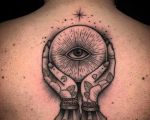The History of Tattooing: From Ancient Cultures to Modern-Day
Tattooing has been a form of self-expression and cultural significance for thousands of years. In fact, the history of tattoos dates back to ancient civilizations where body art served various purposes, from spiritual beliefs to social status. As we dive into the rich history of tattooing, we’ll explore how this art form has evolved and its impact on cultures around the world, especially as it has become a mainstream trend in modern times.
1. The Origins of Tattooing in Ancient Cultures
Early tattooing can be traced back to ancient Egypt, where tattoos were often used for both decorative and spiritual purposes. Archaeological evidence suggests that the ancient Egyptians, especially women, used tattoos as amulets to protect them from evil spirits. Tattoos were also a sign of rank and identity, particularly in the royal families. One of the most famous examples of early tattooing comes from the discovery of the mummified remains of an ancient Egyptian priestess named Amunet, who lived around 2000 BCE. Her tattoos were found to be symbolic, representing both her spiritual and social status.
2. The Role of Tattoos in Polynesian and Maori Cultures
Polynesia and New Zealand’s Maori culture are often associated with traditional tattooing. In these regions, tattoos held immense cultural and spiritual significance. For the Maori people, tattoos (called 'moko') were a representation of a person's lineage, social status, and achievements. The intricate designs were unique to each individual and were used to tell the story of their life. Similarly, Polynesian tattoos often represented connection to ancestors, protection, and a strong bond with the ocean and nature. These tattoos were not only decorative but a means of maintaining cultural identity in a rapidly changing world.
3. Tattooing in Ancient Greece and Rome
Although tattooing was widespread in ancient cultures, it was considered a form of punishment and a mark of slavery in ancient Greece and Rome. The Greeks and Romans used tattoos to identify criminals and slaves. However, some historians believe that the Greek philosopher Herodotus mentioned the use of tattoos in ancient Persia as a sign of higher social status, particularly among their military leaders. Over time, tattoos began to fade from European societies, but they persisted in isolated regions, particularly in the East.
4. Tattoos in the Modern World: From Rebellion to Fashion
The resurgence of tattoos in the modern world began in the late 19th and early 20th centuries. In Western societies, tattoos started to be associated with sailors, criminals, and countercultures, becoming a symbol of rebellion. However, in the mid-20th century, tattoos began to lose their negative stigma and evolved into a more accepted form of self-expression. This shift occurred in part due to the rise of tattoo parlors and the influence of pop culture figures who publicly embraced tattoos as part of their personal identity.
5. The Global Appeal of Tattoos Today
Today, tattoos are no longer reserved for any particular social class or group. With the global proliferation of tattoo studios and increased visibility on social media platforms, tattoos have evolved into a mainstream form of art. In fact, tattoos are now seen as an expression of individuality, personal experiences, or even artistry. Celebrities, athletes, and influencers have played a significant role in normalizing tattoos, making them an accessible and popular form of self-expression.
6. The Psychological and Social Impact of Tattoos
As tattoos continue to gain popularity, many individuals turn to tattooing as a form of therapy or healing. In some cases, people get tattoos to mark a major life event, such as overcoming illness or the loss of a loved one. Psychological studies have shown that tattoos can serve as a tool for individuals to reclaim their bodies, especially for those who have experienced trauma or body image issues. Tattoos can also promote a sense of belonging and community, as people with similar tattoos often feel a shared connection to others who appreciate the art form.
7. The Future of Tattooing
Looking ahead, tattooing is poised to continue growing as both an art form and a means of personal expression. With advancements in tattoo technology, including more intricate designs and better tattooing machines, the possibilities are endless. Moreover, as societal norms continue to evolve, we may see even more diverse styles and designs emerge. One thing is for certain: tattoos will continue to shape the way people express their identity and tell their stories for generations to come.








